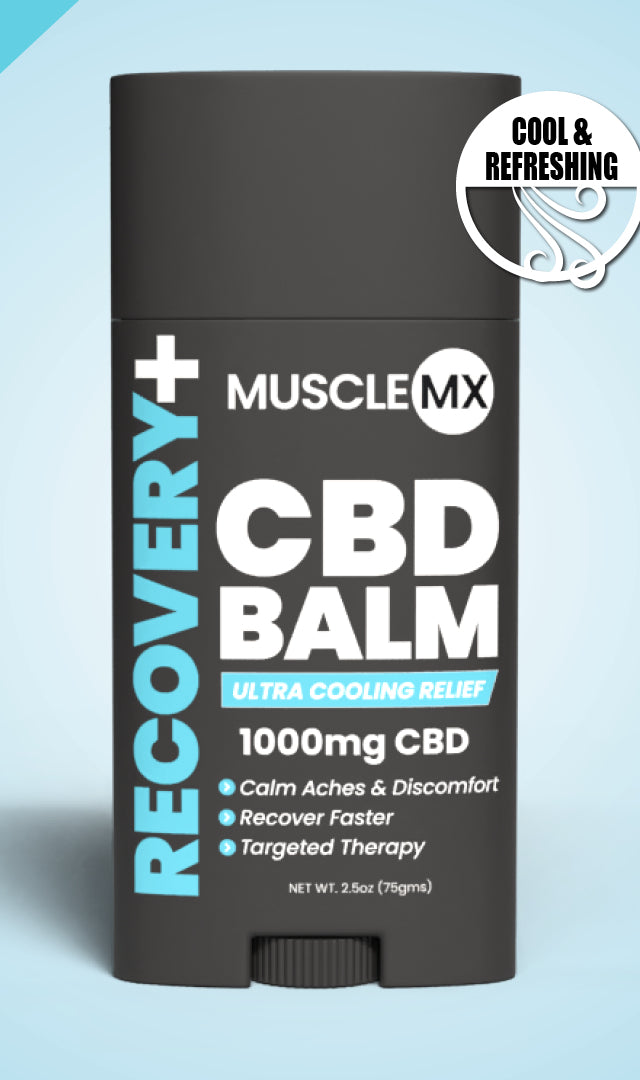What Is Dull Pain? Difference in Types of Pain
|
| Dull pain can be caused by various factors, and is what you feel when you have tension in the back of your neck that seems to come at the same time every day. |
Dull pain could also be an ache that you feel in your stomach, chest, or in a particular muscle that may ebb and flow but never really goes away.
While a cut, bruise, or burn might be painful in the moment, it typically starts feeling better right away. Dull pain is usually long-term, not overly intense, and slowly nagging away at you, making you reach for ibuprofen day after day.
If you’re dealing with dull pain, you might also describe it as:
- Achy
- Gnawing
- Sore
- Spasmatic
- Throbbing
- Cramping
What are the causes of dull pain, and what are ways of treating it? Let’s explore this question, but first, let’s look at different types of pain to narrow down which ones are the kinds that cause that dull, aching feeling.
What Are the Main Categories of Pain?
Believe it or not, there are quite a few ways that pain is categorized. You can think about pain in terms of how it feels, how long it lasts, what causes it, or where it’s coming from in the body. As we’ll see, dull pain actually fits into several of these categories.
Understanding the different types of pain can help you figure out what might be causing your particular pain and, hopefully, what the solution might be.
Nociceptive Pain
The first types of pain we’ll look at are categorized as pain caused by damage to body tissue.
This is called nociceptive pain, and it’s further categorized by how deep or shallow the body tissue is. Some pain, like a bruise or burn, is felt on the surface of the body because it’s affecting the body tissue in the skin.
Pain that is felt deeper in the body often has to do with problems related to the body tissue in the major organs or central nervous system. This can be painful in a different way, and is sometimes more serious.
Surface Level: Somatic
If the pain that you’re experiencing is happening because the pain receptors in your body tissue are being stimulated, this is called somatic pain.
There are a lot of examples of somatic pain that we experience, often on a daily basis:
- Scratches
- Cuts
- Burns
- Broken bones
- Pulled muscles
- Post-surgical healing
- Muscle strains
If you want to remember what somatic pain is, just think of sports injuries. When we’re running, cycling, swimming, climbing, jumping, or skiing, most of the pain we experience will come from accidents or injuries we sustain while on the field, up the trail, or in the pool.
A broken or sprained ankle, for example, is highly painful, but only affects the immediate body tissue where the injury happens.
Deep Within: Visceral Pain
When pain is felt deep within the body — in the chest, stomach, low back, or head, this is often called visceral pain. The difference with this type of pain is that it comes from actual damage to the internal organs in the body.
Often, autoimmune disorders like Crohn's disease can cause visceral pain because the body actually damages itself, hurting the digestive system when you eat certain foods.
A lot of the time, visceral pain can be described as deep, because it isn’t happening at surface level of the body.
Some potential causes of visceral pain include:
- Digestive diseases (including celiac, IBD, IBS, and Crohn's disease)
- Ulcerative colitis
- Fibromyalgia
- Menstrual cramps
- Pancreatitis
If you’re experiencing visceral pain, you might also describe it as aching, pressing, squeezing, deep, dull, gnawing, or twisting. Because visceral pain can sometimes indicate a more serious condition, it’s important to stay on top of it and get medical attention if you’re not sure why you’re feeling pain.
Acute vs. Chronic Pain
Another way to categorize pain is by how long it affects you. Some pain is quick and fast - think of ripping off a band-aid. The pain is intense, but is generally over very quickly.
Other pain is very slow and doesn’t resolve easily. If you sprain your ankle while hiking, you may injure and reinjure it over months and even years, causing persistent pain.
Acute Pain
The kind of pain that immediately starts getting better after it starts is called acute pain. These are usually physical injuries that happen to the outside of the body.
Some examples of acute pain include:
- Post-surgery pain
-
Sports injuries (sprains, strains, pulls, broken bones)
- Post-dental work pain
The upside of acute pain is that even though it’s usually intense, you typically can take comfort in knowing it will get better at some point in the near future. Because it generally doesn’t last as long, acute is usually treated with bandages and casts or basic medications like ibuprofen and acetaminophen.
If the pain is severe enough, stronger medications like muscle relaxers might be used.
Chronic Pain
When pain doesn’t go away after months, years, or decades, it becomes classified as chronic. Just mentioning chronic pain might give you a sense of dread if it’s something that you have experience with. Unlike acute pain, chronic pain can require a lot of time, resources, and even finances just trying to find a diagnosis or treatment.
There are many different health conditions that can cause chronic pain.
Some of the common causes of chronic pain include:
- Back injury and lower back pain)
- Aging
- Headaches (including cluster and migraine)
- Being overweight
- Arthritis
- Stomach ulcers
- Autoimmune disorders (like multiple sclerosis)
Chronic pain is much more likely to be felt as dull than acute pain, as it is more constant and sometimes less severe. Treating chronic pain will often include treatments that are focused on ending or managing pain, like surgical procedures, long-term prescription medication, physical therapy, or cortisol injections.
If you struggle with chronic back pain, you may have gone down a long road of doctor’s visits, physical therapy programs, and many different types of medication. Even with dull, aching pain, the mental stress of dealing with daily discomfort can be just as bad as, if not worse than, the pain itself.
To deal with the emotional toll, sometimes antidepressants are prescribed to those dealing with chronic pain.
Neuropathic Pain
Another more specific category of pain is what comes when your nerves aren’t working properly and the pain receptors in your body are confused, leading to discomfort that may take several different forms.
There are several specific conditions and illnesses that cause neuropathic pain, like:
- Fibromyalgia
- Sciatica from a spinal injury like a herniated disc
- Alcoholism and drug addiction
- Shingles
Neuropathic pain is usually also chronic, because it doesn’t just go away. If you have chronic pain, it can be very discouraging because there isn’t always a clear reason that it’s happening. This can also result in a long road of trying to figure out what the cause is and what can be done to alleviate it.
Neuropathic pain can be felt in many different ways. If you have a condition like small fiber peripheral neuropathy (which can happen from an injury to the spinal cord), you might feel burning, freezing, tingling, numb, and achy pain, all in the same day.
Like chronic pain, pain from nerve damage can also be mentally exhausting. Trying to treat it can often involve more intense interventions like surgical procedures, temporary nerve blocks, and strong medication. In severe cases, nerves are sometimes blocked so that the pain isn’t felt, but neither is any other feeling.
Which Types of Pain Tend To Be Dull?
Out of the all the pain types we’ve looked at, these are the types of pain that typically feel dull:
-
Visceral Pain: Because it’s felt deep within the body and not on a surface level, visceral pain tends to be described as a dull, aching pain. Two good examples are the most common types of pain we experience on a daily basis: headaches and stomach aches. While either one can be felt as sharp pain, they are both typical dull aches.
-
Chronic Pain: It’s rare for chronic pain to be sharp or jabbing. Instead, it usually feels dull and gnawing.
-
Neuropathic Pain: Pain that comes from damaged nerves can be a little more difficult to categorize because it’s often unpredictable — swinging from a sharp jab to a dull throb. However, it’s very common for neuropathic pain to be categorized as dull due to its constant, persistent nature.
An important thing to remember is that though there are different categories of pain, they all can overlap and change over time. Sometimes acute pain can become chronic if it goes on for an extended time. In the same way, chronic pain can also be neuropathic if it involves damage to the pain receptors in your nerves.
All of this overlap means that many of the treatments for each type of pain may be the same or at least similar.
What Are Some Treatment Options for Dull Pain?
If you have dull, persistent pain, treatment will depend on what the source of the pain is — identifying the cause is crucial in order to find the right treatment plan.
In general, though, your pain level will be the most important in determining the best course of action for treatment. Prescription medication may be enough for a dull ache that bothers you, but you can still function, but it won’t be enough if your pain is a more intense, dull throbbing pain.
The area of the body where you’re experiencing the dull pain is important as well. If you have a localized area of pain, then topical pain relievers may be enough to bring you some relief. If you have more generalized dull pain, oral medication might be necessary. If your pain is intense enough, it may be worth looking into physical therapy or surgical procedures.
Finding Answers to Dull Pain
No matter what kind of pain you may be experiencing, if you’re having trouble with daily activities because of difficulty with pain management, consider trying to figure out the cause of your pain. Talk to your healthcare provider about your symptoms and start to improve your quality of life.
Look for resources that could change your future for the better — don’t let dull pain keep you down.
Sources:
Coping with chronic pain | APA
Nerve Blocks | Johns Hopkins Medicine.
Visceral pain: the importance of pain management services | PMC.

















































